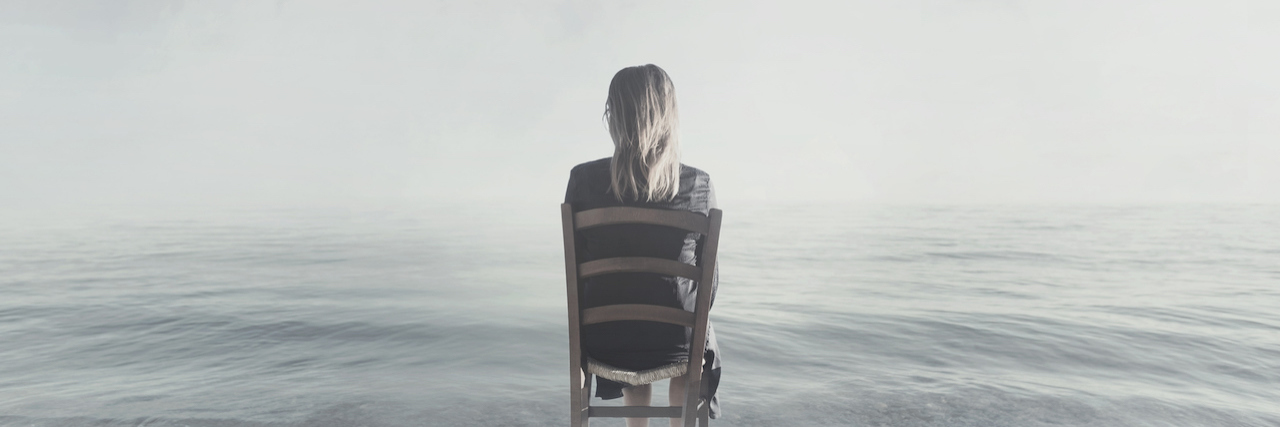Years ago when I was a new professor, a friend who was active in the National Alliance on Mental Illness (NAMI) asked if she could give a presentation on mental illness in my teacher education classes. To my eternal shame, I declined. I didn’t think it was relevant to my students or course content. Really, I was recoiling, buying into the stigma. My friend and her family were going through a rough time with their son who has schizophrenia, and I didn’t want to bring that into my classroom. Mental illness was someone else’s problem.
Yesterday, I finally apologized to my friend. I told her that now, I give presentations in my classes on mental health and suicide awareness with the same urgency she once had. That I include suicide prevention information in my blog, my new grief memoir and public speaking about suicide loss. These concerns are everyone’s problem. But it’s hard to get anyone’s attention, outside of a captive audience, until mental health conditions or suicide get personal.
“My son had a mental illness and he took his life.” It’s taken another friend months to be able to make this statement, frozen with tears. It took more than three years after my son Noah’s suicide for me to understand that my family, too, was living with mental illness. Like another struggling young man and his family in Kay Jamison’s “Night Falls Fast,” Noah’s illness moved faster than his or my acceptance of it. My book traces the fraught dawning of this realization and my still uneasy membership in this community.
Before Noah’s suicide, I would have read from a great distance another mother’s lament about living with her son’s opioid addiction. “We’d known him since he was in the womb,” Judy Chicurel writes of her adult son in the New York Times, “but that wasn’t the same as knowing him now.” Yearning to connect, she conjures a quiet scene of night fishing together. This, she imagines, would soothe her son’s mind and allow the two of them to speak freely of “everything and nothing” — except his condition, his many relapses and rehabs, “anything that would cause him to crawl back into himself and become invisible.”
Though Noah was never addicted to drugs, I’ve been that mother: desperate, bewildered, helpless and exhausted as my child’s mind spun out of control and he retreated ever further from love and help. How I contrived, too, to set the scene where he could relax and return to the Noah we knew, full of conversation, charm and curiosity. Instead, there was this hunched, haunted stranger at the table. Whatever I did to try to try to reach him, he rebuffed me with silence or “I don’t know.” Even more than my husband and me, Noah was desperate, bewildered, helpless and exhausted.
Was there some gateway drug in his youthful experimentation that messed with Noah’s brain? After his death, we learned that a bad marijuana edible triggered a massive anxiety attack; were there more such disasters we’ll never know? “The gateway to all of it is life,” Chicurel insists; “what happens, what you experience, what you choose to take in and decide to leave behind.” What Noah took in from life and what he couldn’t leave behind, like a good friend’s suicide, may have been too much for his sensitive soul to bear. But no one chooses to be seized by addiction or other mental illness. The only choice, I think, comes in finally summoning the will to get treatment and commit to it — and some are never fully able to embrace the opportunity
“I hope this is the last time,” Chicurel says of her son’s latest visit to rehab. “I hope he can finally feel the love that surrounds him.” How my husband and I yearned for the same opening for Noah, who spent the last months of his life seemingly cut off from feeling. How I regret not pouring out my love to him every day of the weeks he lived with us, which turned out to be the last weeks of his life. “The last time” sparks hope for the families of those struggling with addiction and those prone to manic and psychotic episodes. “The last time” for suicide loss survivors reminds us of all the moments that we didn’t know were the last chance to cherish our lost ones.
And for all that we share, there is the crucial difference between a mother like Chicurel and a mourning mom like me: she can always hope to take her son night fishing and see him, one day, free of pain.
Follow this journey on Walking the Mourner’s Path After a Child’s Suicide.
We want to hear your story. Become a Mighty contributor here.
Getty image via fcscafeine

